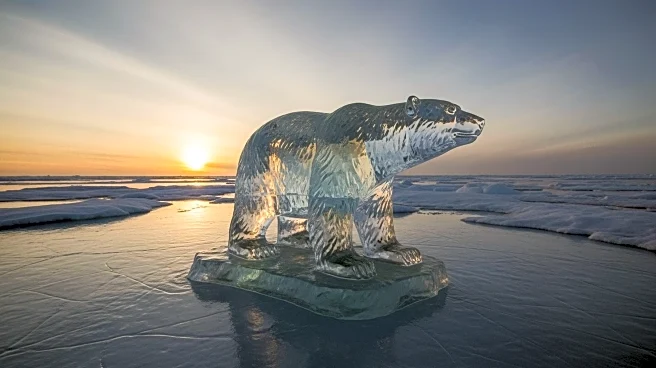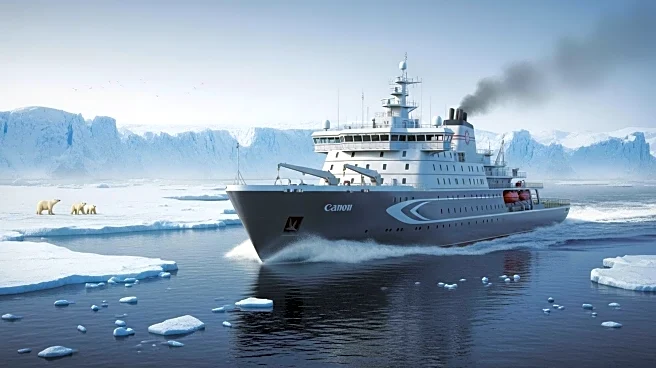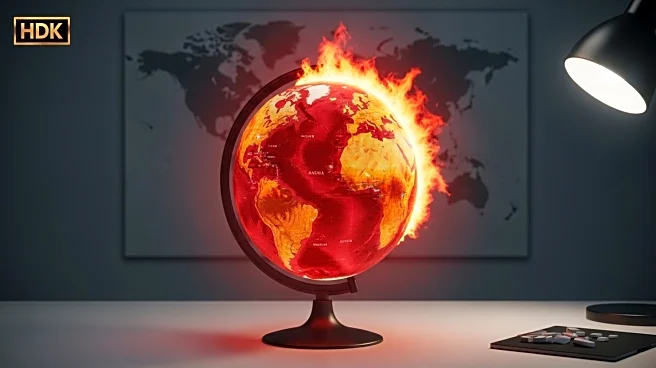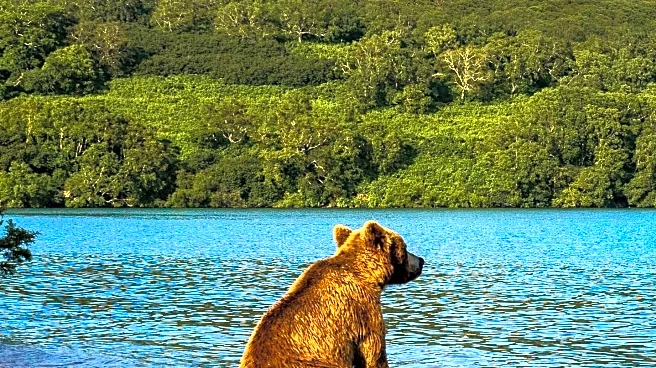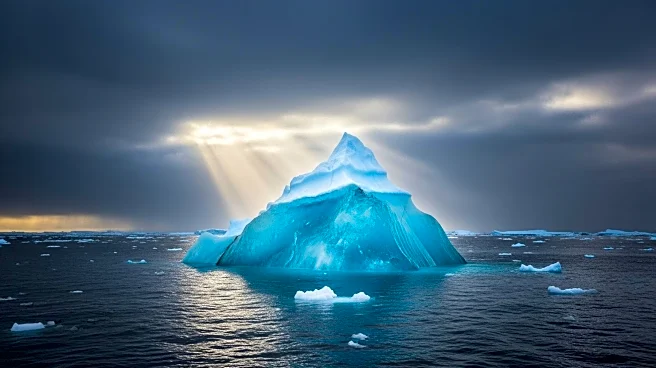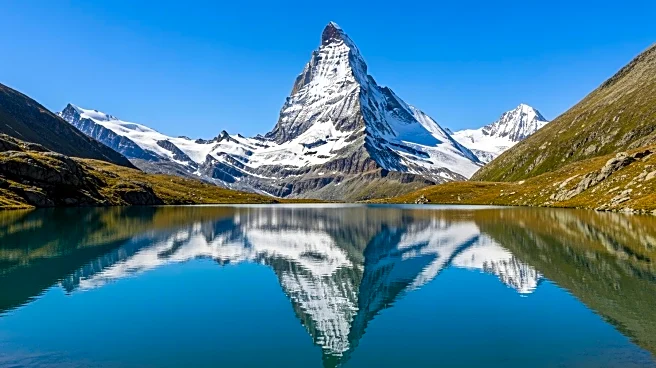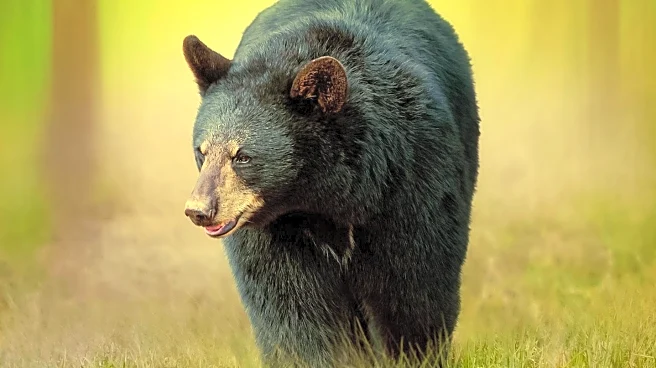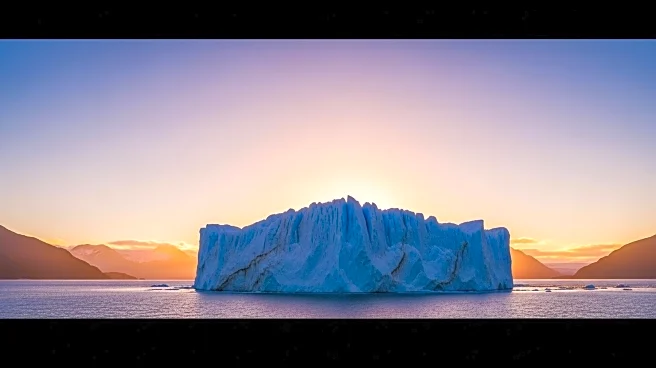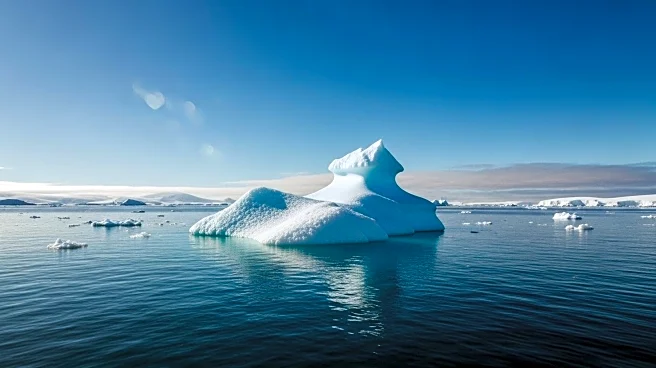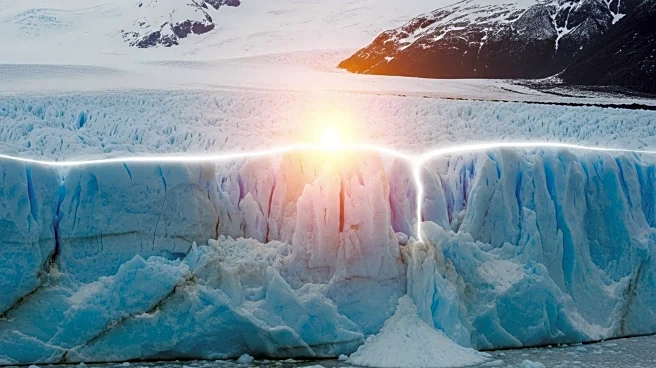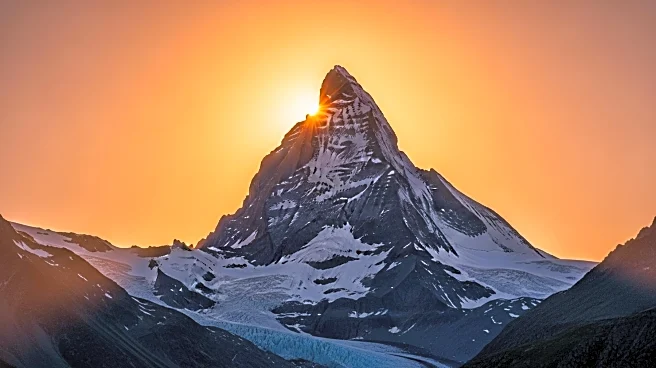What is the story about?
What's Happening?
A recent exploration of Alaska's Arctic sea ice has brought attention to the significant losses occurring due to climate change. The melting of sea ice is affecting local ecosystems and communities, particularly those relying on the ice for traditional hunting practices. The decline in sea ice, which has been observed since satellite monitoring began in 1978, is attributed to rising global temperatures. This reduction in ice cover is not only altering local ecosystems but also contributing to global warming by exposing dark ocean water that absorbs more solar radiation.
Why It's Important?
The decline of Arctic sea ice has profound implications for both local and global environments. For Alaskan coastal communities, the loss of ice means increased coastal erosion and threats to infrastructure due to longer periods of open water. This also impacts wildlife, such as polar bears, which depend on sea ice for hunting. Globally, the reduction in reflective ice surfaces accelerates climate change by increasing heat absorption in the Arctic. The situation underscores the urgent need for addressing greenhouse gas emissions to mitigate further environmental and societal impacts.
What's Next?
If current trends continue, climate models predict that the Arctic could be ice-free during summer within decades. This would open new shipping routes but also lead to significant ecological changes. The continuation of winter sea ice formation is expected for now, but without reductions in greenhouse gas emissions, even winter ice could disappear by the century's end. This scenario calls for immediate action to curb emissions and adapt to the changing Arctic environment.
Beyond the Headlines
The thinning and younger nature of Arctic sea ice also affects traditional practices, such as using multiyear ice for drinking water. The cultural and lifestyle changes faced by indigenous communities highlight the broader social impacts of climate change. The situation in the Arctic serves as a stark reminder of the interconnectedness of global ecosystems and the far-reaching consequences of environmental degradation.
AI Generated Content
Do you find this article useful?
